Template:EvoLudo
EvoLudo is a growing collection of interactive tutorials that complement numerous research articles on evolutionary games (ludo Latin for "I play" or Italian for "game"). These tutorials allow the reproduction and verification of results reported in scientific articles. In addition, they are intended to encourage the interested reader, students and researchers to explore the fascinating world of game theory and evolutionary dynamics in a playful manner. This helps to develop a better intuitive understanding of the often complex evolutionary dynamics and encourage further explorations in the fascinating and often mesmerizing world of spatio-temporal patterns.
EvoLudo is the successor of the [VirtualLabs http://www.univie.ac.at/virtuallabs], which had been inspired by Karl Sigmund and have attracted over 250k visitors since their initial instalment in 2002.
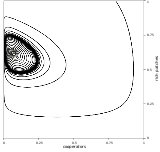
Asymmetric evolutionary games
Upcoming: tutorial on asymmetric evolutionary games. In nature, asymmetric interactions are the norm rather than the exception, whereas for models in evolutionary game theory the opposite holds. Even individuals of the same species tend to differ in more ways than in just some strategic behaviour, and these differences inevitably result in asymmetries. For example, individuals may differ in body size, strength or agility, experience different developmental histories or availability and access to resources – all of which are likely to have some impact on the costs and benefits experienced by each individual in interactions. In general, such differences can be attributed either to the genetic makeup of an individual or its environmental conditions. Interestingly, asymmetry uncovers differences between genetic and cultural evolution that are not apparent when interactions are symmetric.
Environmental heterogeneities are modelled by considering patches of different qualities that are occupied by one individual each. The fitness of the occupant not only depends on interactions with others but also on the quality of its environment. In static heterogeneous environments, the long-term dynamics are the same as for symmetric interactions in an average, homogeneous environment. However, introducing environmental feedback between an individual's strategy and the quality of its patch results in rich eco-evolutionary dynamics. This enables individuals to act as ecosystem engineers. The nature of the feedback and the rate of ecological changes can relax or aggravate social dilemmas and promote persistent periodic oscillations of strategy abundance and environmental quality. This summarizes recent research efforts:
- Hauert, C., Saade, C. & McAvoy, A. (2018) J. theor. Biol. 462 347-360 doi: 10.1016/j.jtbi.2018.11.019
- McAvoy, A. & Hauert, C. (2015) PLoS Comp. Biol. 11(8): e1004349 doi: 10.1371/journal.pcbi.1004349
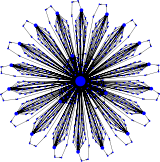
Evolutionary graph theory
New tutorial added on evolutionary graph theory, which provides a formal approach to describe the spreading and fixation (or extinction) of a mutant type in structured populations. Interestingly, the fixation probabilities remain unaffected by the underlying structure for a large class of graphs. However, some graphs may act either as amplifiers or suppressors of selection by increasing or decreasing the fixation probabilities as compared to unstructured populations. In contrast, fixation and absorption times are very sensitive to changes in the graph structure and hence vary greatly even for graphs that leave fixation probabilities unchanged. Even though fixation times are, in general, not preserved between graphs, symmetries of a graph can at least ensure that fixation times do not depend on the initial location of the mutant. This summarizes research efforts that span over a decade, including:
- McAvoy, A. & Hauert, C. (2015) J. R. Soc. Interface 12 20150420 doi: 10.1098/rsif.2015.0420
- Jamieson-Lane, A. & Hauert, C. (2015) J. Theor. Biol. 382 44-56 doi: 10.1016/j.jtbi.2015.06.029
- Lieberman, E., Hauert, C. & Nowak, M. (2005) Nature 433 312-316 doi: 10.1038/nature03204.
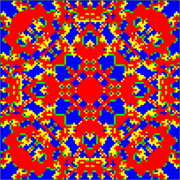
|
ClassicsClassic patterns generated by the spatial prisoner's dilemma and first published by Nowak, M. A. & May, R. M. Nature 359 826-829 (1992). Spatial structure enables cooperators (blue, green) survive under conditions where otherwise defectors (red, yellow) would take over. Through spatial clustering cooperators interact more frequently with other cooperators and reduce exploitation by defectors. |
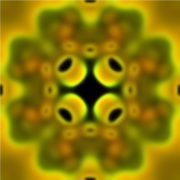
|
ModernSpatial heterogeneity promotes cooperation based on different types of pattern formation processes driving the density distribution of cooperators (green) and defectors (red). Individuals can migrate (diffuse) in order to populate empty territories (black). Slow diffusion of cooperators fosters aggregation in highly productive patches (activation), whereas fast diffusion enables defectors to readily locate and exploit these patches (inhibition). These antagonistic forces promote co-existence of cooperators and defectors in static or dynamic patterns, including spatial chaos of ever changing configurations |
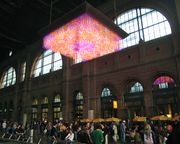
|
ArtsInstallation "Evolution" on the NOVA, the world's largest true 3D display in the main train station in Zürich, Switzerland. The installation was created in collaboration with media artist Chandrasekhar Ramakrishnan and is based on the EvoLudo simulation toolkit. “Evolution” was presented in September 2009 in honour of Darwin's bicentenary and became part of the permanent collection until NOVA was retired in 2012. The NOVA display is a 5×5×1m cube of 25,000 LED lights and displays the competition of cooperators (blue, green) and defectors (red, yellow) in the prisoner’s dilemma in 3D unfolding as an ‘evolutionary kaleidoscope’. |